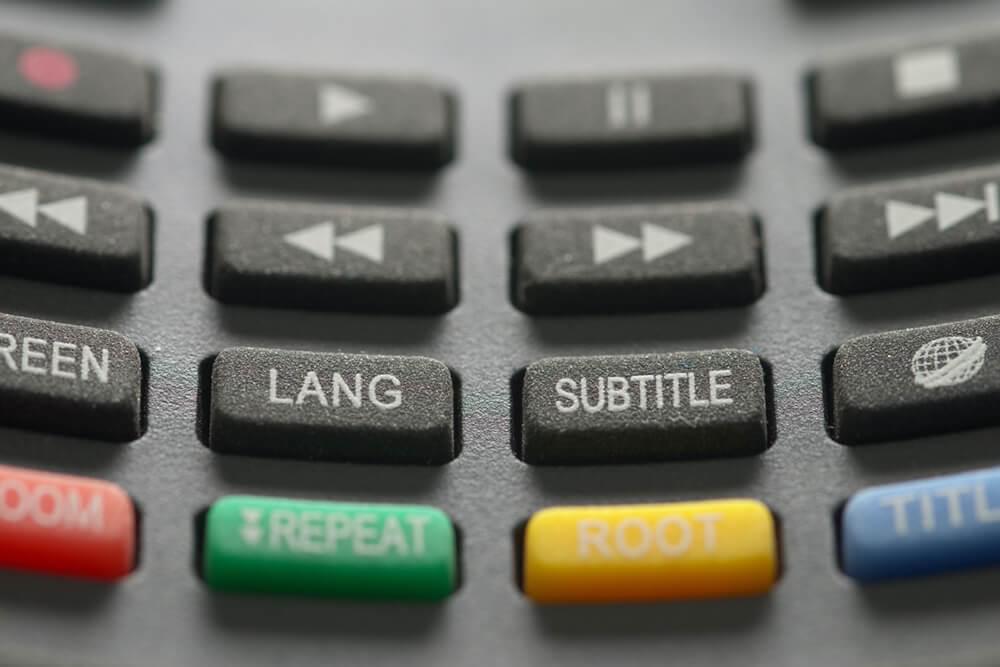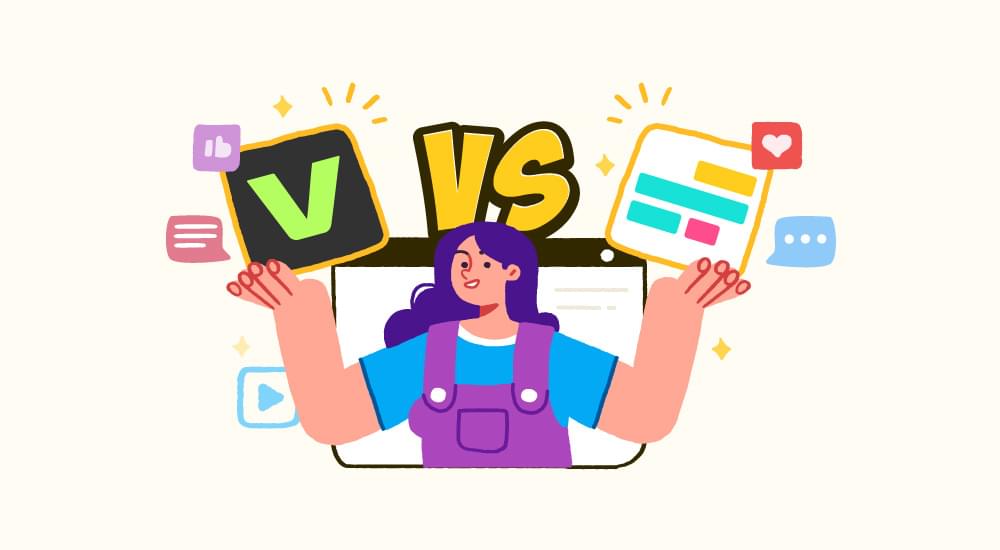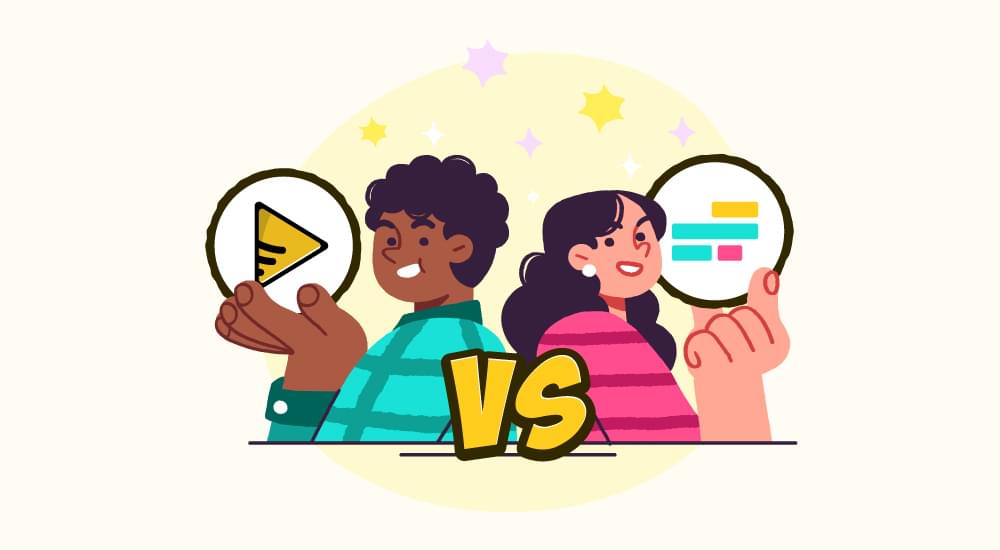
benefits of subtitles in video
Subtitle Errors: Netflix’s new hit show ‘Squid Game’ draws criticism for inaccurate subtitles
Netflix’s latest hit series, Squid Game has proved to be an instant treasure trove of entertainment for its viewers. The show features 456 financially desperate players vying for the prize money worth $45 billion - but those games quickly turn deadly as they fight against one another and other contenders like themselves.
The action-packed drama follows a few characters on their quest through these deathdefying matches while trying desperately not get beaten by anyone else or risk being taken out before reaching victory lane with all this loot at stake.
With a plot that mingles satire and melodrama, Squid Game is also arguably one of the most innovative, original and anticipated shows on Netflix. This captivating tale about the lengths people will go to for money is based on several games.
The six games played by the contestants are all based on Korean children’s games that many people would already know, like tug-of-war and red light/green light. The last game is called “squid game”.
The Plot: Squid Game

450 debt-ridden people put their life on the line in order to win money. Each game has a different outcome, and if you lose even one game would cost them their life!
The show highlights South Korea’s class divide with eight major characters who play important roles throughout all six rounds–from a gang boss to a once successful businessman now wanted by the law for stealing from his clients, from a migrant factory worker taking his chance at winning millions in these deadly games to a North Korean defector and more.
The show has received critical acclaim for its exciting plot line, excellent dialogue and riveting story. But the only complaint coming from some viewers is about the poor subtitles in the show. The hit series has been under fire over “gross mistranslations“ in the subtitles. A language expert has warned that the real meaning of events depicted in this hit show could get lost among other things because the on-screen text is inaccurate.
Like with all translations, meanings sometimes have to be adapted and some of the details get lost in translation because languages can’t be translated directly. However subtitles are often missing vital information or gross mistranslations due:
- Limited space (The TV show has only so much room on screen)
- Complexity between words & sentence structure; difficult sentences make for longer texts which translate poorly onto small screens without highlight capabilities.
Subtitling Errors
Subtitle errors in movies and TV shows are so common that they are almost expected to be part of the viewing experience. However, what most viewers don’t realise is that these errors often go far past misspelled words and bad grammar; many times, subtitles include content which was not intended for foreign audiences.

To an extent, it’s understandable why this happens. Foreign distributors often hire cheap labor in developing countries to save money on subtitling costs. If one poorly paid worker is assigned the task of translating and subtitling a two-hour film, he or she will understandably find ways to be as efficient as possible with time and effort. And if you’re being paid pennies per hour, are you going to argue with your employer over correct grammar?
However, it doesn’t take a lot of digging online before fans who know foreign languages come across some rather interesting errors which go beyond just missing letters. Every once in a while, we’ll hear about fans who prefer subtitles to dubbing, as they feel that it is more accurate.
This belief probably comes from the common practice of removing content or dialogue which may be offensive to foreign countries where the material will be distributed as well as fixing minor grammar and spelling errors which result from time constraints on subtitle production. But some aren’t so easily justified…
Why are subtitle errors so common ?
We don’t know exactly how many subtitle errors are created every year, but the figure is probably north of tens of millions. Much subtitled content originates from various countries, so it’s not surprising that the languages involved are often English and non-English.
This means there are far more opportunities for errors than if everything was in just one language. For example, French movie producers have access to Gallic audiovisual support rather than resorting to American or Canadian friends for help with subtitles - an advantage that doesn’t apply to their Indian counterparts who must turn to native speakers outside India for assistance with English subtitles.
The fact that non-native speakers tend to be paid less than professionals would make problems all the more likely. Also, the more unfamiliar a language, the greater the risk of errors.
Literal Translations
Non-native speakers sometimes apply a too literal translation from their own language into English. This can lead to odd sentences that may convey the meaning, but not the style or rhythm of the original.
In some cases, it could be argued that nothing is lost - apart from a few superfluous words which could have been better used elsewhere. However, in most instances an overly literal approach results in “noise” – stuff that’s surplus to requirements and should have been cut out.
Punning Subtitles
A subtitler has a limited space through which to express themselves so puns are likely to pose problems.
Subtitles often try to convey the same feeling as the original dialogue, but puns rarely translate well. As a result, it’s common for subtitles to lose their “punch”. In addition, the subtitler has to pick from a handful of possible substitutions that can sometimes make little sense.
Lack of Training
Subtitling is an art and a craft which takes time to learn. Even native speakers need years of experience before they can turn out error-free subtitles.
It’s not surprising, therefore, that non-natives are going to take even longer - especially if they receive little or no training prior to employment. In fact, many will probably never become competent subtitlers despite being immersed in their source language for years on end!
Tight Deadlines

The high demand for subtitles means most providers aren’t about to ask their staff to submit work late even if there are problems with quality control. So, deadlines are usually tight leading to an ever-increasing risk of mistakes creeping into the final product.
There are many reasons why subtitles go wrong but these are probably the main ones… which hopefully helps explain why there’s so much incorrect subtitling out there!
Poor Timing
There are various timing methods for adjusting subtitles to fit the dialogue. These include:
- Lead In/Lead Out
- Preferred Timing (PTS)
- Adopted Timing (AT)
- Center Cut
They all work well, but usually it’s necessary to re-time one or more lines because of errors or fluctuations in the source. This changes the length of time that the subtitle appears onscreen - often resulting in a mismatch with what’s being said. It’s not surprising therefore that this is another common mistake!
Subtitles also have to deal with overlapping speech which can be difficult if there are problems aligning subtitles with their corresponding audio track. The only solution is to delay showing subtitles until after they’ve spoken - which again can result in timing errors.
Sticking to Exact Phrasing
Some subtitle formats allow the creator to use exact English phrases verbatim . This is intended only for places where the dialogue is being quoted or sung - but some subtitlers see it as an opportunity to ignore correct translation principles by sticking to their own language style.
They figure that if they’re close enough, viewers will understand what’s being said even though it may be incorrect. It might not affect everyone, but for those it does impact, it can lead to major misunderstandings!
The solution of course is for providers to specify that the English should follow the time codes rather than just repeat everything word-for-word.
Subtitler Poor Spelling and Grammar
It’s widely accepted that good spelling and grammar are vital if subtitles are to be understood. Unfortunately, there are subtitler who believe it’s OK to ignore them - especially when typing at speed.
So, this is yet another common mistake that risks “rubbing off” on others who read the translations of their work! Subtitles must not only look right but also sound right which means correct punctuation is also important.
Think about what you’re writing and check for mistakes - then sleep on it before making final edits because you could always miss something!
Chewing the Scenery
Some subtitlers want to make a big impression by using different styles of translation depending upon whether they’re dealing with serious or humorous material.
They want viewers to see that they’re clever, inventive and dynamic. It’s interesting to note that nobody even notices when native speakers make mistakes in their speech - but subtitles are under the microscope all the time so everyone sees them!
As a result, if you want to be taken seriously as a subtitler, it’s much better to stick with one style of translation especially when working with serious material because audiences will assume minor inaccuracies are due to transcription errors rather than your lack of skill!
Dubbing vs. Subtitles
It used to be assumed that viewers would always prefer dubbed versions over subtitles for foreign language content. However, audience demographics have changed considerably since then making it far easier for providers to get away with subtitling almost anything and still make money.
This has brought subtitling to the forefront and audiences now expect it for all foreign language content. Unfortunately, some providers still think they can get away with dubbing for anything considered “high-brow” - such as documentaries, art house movies or educational programs about science or history.
Clearly this is not the case as people want correct translations that they can read at their own speed without having to listen carefully too. Sadly, they’re likely to switch off pretty quickly if you don’t provide them with what they want so play safe and subtitle your material properly!
What’s the Difference Between Closed Captions and Subtitles?
While both subtitles and closed captions are displayed text that transcribe video to text, translate or otherwise convey the audio portion of television programs, movies and video games to individuals who cannot hear them, there are important differences between the two.
Closed captioning may also include sound effects or other sounds in order to better convey important information about ambient noises - a feature often missing from subtitles.
Subtitles translate video dialogues and on-screen text into a language that the viewer understands, while closed captioning describes sounds and sound effects as they occur, which makes them particularly useful for individuals who are deaf or hard of hearing.
The benefits of closed captioning are for people who are deaf or hard of hearing, while subtitles are intended to assist people who speak a language other than the one spoken in the video.
SubtitleBee Offers Accurate Subtitles and Captions for All Your Projects
At SubtitleBee, we are passionate about providing high-quality subtitles for users of all types. Whether it’s educational material, film or television content, we offer subtitles and translations in 100+ languages.
In today’s world of on-demand, streaming services and YouTube videos it is more important than ever to have high quality subtitles. In particular foreign languages can tremendously expand an audience base as well boost search rankings in countries where they aren’t available - which will increase discoverability for viewers across the globe!
Our easy-to use subtitling and audio transcription service guarantees high quality translations at an affordable rate, saving you time. We have subtitles in over 100 languages that will get your message across no matter what the occasion.
For more information, feel free to contact us today!
Add and translate your subtitles to more than 100 languages with high accuracy












